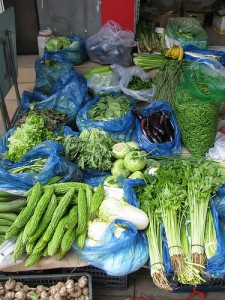It was almost exactly 345 years ago that Samuel Pepys famously dug a hole in his garden in order to save his parmesan cheese from the Great Fire of London:
…and I took the opportunity of laying all the papers of my office that I could not otherwise dispose of. And in the evening Sir W. Pen and I did dig another, and put our wine in it; and I my Parmazan cheese, as well as my wine and some other things.
I like to think the great diarist would have been fascinated to know both that production of that caseinic wonder continues to this day around Parma (with the no doubt invaluable protection of the European Union), and that it is currently largely in the hands of Sikh immigrants:
In the middle of the Po Valley, where the xenophobic Northern League has its core voters, there is now a symbol that coexistence between different cultures and religions can work very well. In Pessina Cremonese, between Mantua and Cremona, the largest Sikh temple in Europe was recently inaugurated. And all agree: without this Indian folk and religious community this area would be much poorer, and typical Italian products such as Parmesan cheese would perhaps be no more.
 So, in retaliation for Europe protecting Roquefort, Stilton cheese and Scottish farmed salmon (sic.), among other agrobiodiversity products, the Chinese have slapped Protected Denominations of Origin (PDO) on
So, in retaliation for Europe protecting Roquefort, Stilton cheese and Scottish farmed salmon (sic.), among other agrobiodiversity products, the Chinese have slapped Protected Denominations of Origin (PDO) on